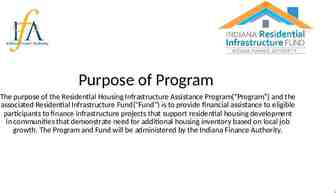Turnaround Implementation Planning IR3 Campuses, 2017-18
28 Slides400.01 KB

Turnaround Implementation Planning IR3 Campuses, 2017-18

IR 3 Turnaround Implementation Planning Welcome to the implementation planning training for IR3 campuses. This guidance is intended to be used by the Campus Intervention Team (CIT, includes the DCSI and PSP) and the Campus Leadership Team (CLT, includes principal and other campus leaders) of campuses that developed an approved turnaround plan in Spring 2017 and then received an IR3 rating in August 2017. Purpose The purpose of this training is to provide guidance to IR3 campus teams on how to turn the turnaround plan, which provided a broad picture of what the campus will do to improve its performance in two years or less, into an implementation plan that will show how the campus team will make the plan a reality. The implementation plan will also allow the coordinated team of the CLT, CIT, ESC, and TEA staff to provide campus support and track the impact of implementation on student outcomes.

IR 3 Turnaround Implementation Planning How to use this training: First, you’ll need to download a couple of resources from the IR3 intervention website: 1. The IR3 Implementation Planning Worksheet This is an optional tool to assist campuses in planning. If a campus team has another planning tool or process in place, they may use that. 2. The Sample Turnaround Plan for Implementation Planning Training You’ll also need: a copy of your campus’ commissioner and board approved turnaround plan The blank implementation plan template you’ll be using in 2017-18 For this training, we will use the new Targeted Improvement Plan template developed by the agency. However, campuses may use this template, the 2016-17 template, or an established template of their choice. See the Template Flexibility Guidelines for more information about plan templates.

IR 3 Turnaround Implementation Planning Process In this training, we will take participants through 4 steps. The step will be indicated on each page at the top. 1. Assess the foundation of the turnaround plan In this step, we will revisit the vision/outcome, systemic root cause, and turnaround initiative from the turnaround plan. If the turnaround initiative contains multiple components, we will break those down for ease in planning. 2. Action item inventory During step 2, we will list each action item from the turnaround plan in the implementation planning worksheet and categorize those actions by time and topic. 3. Transfer action items to plan template In this step, we will put the action items from the turnaround plan in the appropriate place in the intervention plan (using the implementation planning worksheet). Then we will fill in any additional information related to those action items in the implementation plan template. 4. Evaluate plan completeness In the final step, we will look at the implementation plan and add actions/goals that are needed for implementation that were not captured in the turnaround plan.

Step 1: Assess the foundation of the turnaround plan

IR 3 Turnaround Implementation Planning Step 1: Assess the foundation of the turnaround plan Activity 1: Review the systemic root cause and outcome On your campus’ turnaround plan, read the systemic root cause and the outcome your turnaround initiative should achieve. For example, in our sample plan: The systemic root cause is “Our campus has a high percentage of students in need of tier 3 interventions, but our staff lacks the capacity and time needed to serve these students.“ Once the turnaround initiative is fully implemented, we should achieve the following outcome: “By providing support for struggling teachers, we will decrease the number of students in need of tier 3 interventions. Those students still needing high level interventions will have the opportunity to work with our strongest teachers.” Reflection questions: Is there strong alignment between your systemic root cause and the outcome? If not, what further actions will you need to implement to ensure that the root cause is corrected? Is there alignment between your campus vision and the outcome listed in your turnaround plan? How can the team continue to communicate the campus vision to all stakeholders responsible for turnaround plan implementation?

IR 3 Turnaround Implementation Planning Step 1: Assess the foundation of the turnaround plan Activity 1: Review the systemic root cause and outcome Enter your systemic root cause in the implementation plan template your campus is using. (New agency template used for example purposes; systemic root cause will be entered in all root cause boxes.) If your template has a section to measure progress towards your campus vision, enter that as well.

IR 3 Turnaround Implementation Planning Step 1: Assess the foundation of the turnaround plan Activity 2: Complete the Turnaround Initiative and turnaround initiative components section of the Planning worksheet Below is a screen shot of the top section of the planning worksheet. Note that this an optional tool and is not submitted to the agency.

IR 3 Turnaround Implementation Planning Step 1: Assess the foundation of the turnaround plan Activity 2: First, copy and paste the turnaround initiative from the turnaround plan into the turnaround initiative box. The turnaround initiative from the Sample Plan has been entered here.

IR 3 Turnaround Implementation Planning Step 1: Assess the foundation of the turnaround plan Activity 2: Next, determine if your turnaround initiative can or should be broken down into smaller elements. Enter each into the initiative component section (skip this if your initiative does not need to be broken down). In our sample initiative, we see three distinct systems or processes to be implemented: 1) develop and implement a student progress tracking system, 2) develop and implement intervention blocks, and 3) develop and implement a system for coaching and mentoring teachers Reflection Question: How can you categorize the turnaround initiative to make it easier to track implementation: by activity, by impacted stakeholder group, or another way? 1 2 3

IR 3 Turnaround Implementation Planning Step 1: Assess the foundation of the turnaround plan Activity 2: If you have multiple initiative components, enter these into the strategy box (or its equivalent). See the next page for an example of this in the new agency template. 1 2 3

IR 3 Turnaround Implementation Planning Note: Activity cells are hidden for training purposes. The systemic root cause is repeated in the root cause boxes, and each initiative component is included in the strategy box (circled). If you are using a different template or have questions about how to organize these pieces, please reach out to your ESC and TEA partners.

Step 2: Action item inventory

IR 3 Turnaround Implementation Planning Step 2: Action item inventory Activity 1: List all action items from the support systems Now that you’ve organized the big picture items from the turnaround plan, we will shift our focus to the action items found in the support systems: processes and procedures, communications, organizational structure, and capacity and resources. In this step, you will list EACH actionable item from the turnaround plan as a separate item on the implementation planning worksheet in the section titled “Turnaround Plan Action Items.”

IR 3 Turnaround Implementation Planning Step 2: Action item inventory Activity 1: List all action items from the support systems Here is a sample of the processes and procedures from our Sample Turnaround Plan entered into the worksheet. From the turnaround plan: In the planning worksheet:

IR 3 Turnaround Implementation Planning Step 2: Action item inventory Activity 2: Assign initiative component and timeline Now, we will determine which initiative component each action goes with (if you broke your initiative down into components) and determine the timeline for the actions. We will use these to determine where each action item goes in the implementation plan. Actions may apply to more than one initiative component. Use timeline terms from your template. On the new agency template, actions are divided into short, intermediate, and long term goals. If you are using the agency template from 2016-17, the timeline is broken into four quarters.

Step 3: Transfer action items to plan template

IR 3 Turnaround Implementation Planning Step 3: Transfer action items to plan template Activity 1: Match elements of planning worksheet to your template The next task is to transfer each action item into the activity column of the implementation plan, using the timeline and initiative component columns on the worksheet to guide where each action item goes. You can also use the sort feature in excel to sort the action items by timeline or initiative component. Below is an example of action items related to strategy 1 (student progress tracking system) entered into the implementation plan template:

IR 3 Turnaround Implementation Planning Step 3: Transfer action items to plan template Activity 2: Fill in the other template elements Once you have transferred all the action items from the worksheet to the implementation plan, fill in the other template elements as needed. Some the information for the other template elements, like resources and person(s) responsible, may be found within the turnaround plan. If not, ensure that each action item has those elements assigned. Note on problem statements and annual goals: campuses implementing turnaround plans may choose to identify a problem statement and annual goal in one of the following ways: The campus may write a problem statement and annual goal based on the strategy/initiative that is being implemented; The problem statement and annual goal can be based on the index(es) the campus missed in 2017 (these problem statements an annual goals may not completely align to the strategy being implemented); OR The campus can enter the same problem statement and annual goal with each strategy. Campuses that develop a turnaround plan have an assumed problem statement: they are persistently receiving an unacceptable rating under the state accountability system, and the annual goal is to resolve the cause of the persistent low performance and create improved student outcomes. Keep in mind that however the campus team decides to approach problem statements and annual goals in the implementation plan, it is important to be aware of the gains the campus needs to make in each index in order to meet standard in 1-2 years.

Step 4: Evaluate plan completeness

IR 3 Turnaround Implementation Planning Step 4: Evaluate plan completeness Activity: Determine what else needs to be done to implement the turnaround initiative In our example below, we see that there may be some additional actions needed to fully implement a system to track student progress. One major element that is missing are the long term activities-- those tied to the student outcomes that the progress tracking system is intended to create.

IR 3 Turnaround Implementation Planning Step 4: Evaluate plan completeness Activity: Determine what else needs to be done to implement the turnaround initiative As you fill in the implementation plan, consider the following: Alignment Are all initiative components aligned to the turnaround initiative? Are all initiative components aligned to the systemic root cause? Are all initiative components aligned to the campus vision? If the answer to any of the above is NO: What needs to be added to the implementation plan to ensure alignment? What can be removed from the implementation plan to ensure that you are focused on the planned initiative?

IR 3 Turnaround Implementation Planning Step 4: Evaluate plan completeness Activity: Determine what else needs to be done to implement the turnaround initiative As you fill in the implementation plan, consider the following: Efficiency and Effectiveness Does the implementation plan create pressure to ensure successful teaching and learning? Where is there evidence of that in the plan? Does the implementation plan provide support for increasing successful teaching and learning? Where is there evidence of that in the plan? If you cannot find evidence of efficiency and effectiveness in the implementation plan: Who is responsible for creating a sense of urgency? How are those people held accountable for creating urgency? Who is responsible for providing the necessary support for implementation? How are those people held accountable? How do people communicate their need for support to those responsible parties?

IR 3 Turnaround Implementation Planning Step 4: Evaluate plan completeness Activity: Determine what else needs to be done to implement the turnaround initiative As you fill in the implementation plan, consider the following: Continuous Improvement How will implementation be monitored? Where is that evident in the implementation plan? How will you ensure that monitoring data will result in the evaluation and adjustment of implementation activities? Where is that evident in the implementation plan? If you cannot find evidence of monitoring and evaluation in the implementation plan: Where can you include these activities in the plan to ensure that monitoring and evaluation occurs?

IR 3 Turnaround Implementation Planning Step 4: Evaluate plan completeness Activity: Determine what else needs to be done to implement the turnaround initiative As you fill in the implementation plan, consider the following: Clear and Focused Vision Are your goals focused on student achievement? Do the initiative components clearly articulate the path the campus will take to get to an improved state? Ongoing Communication with Key Stakeholders For each component, is there evidence in the implementation plan how the work to be done will be communicated with those responsible for the work? If not, how will you ensure this communication occurs? Is there evidence in the implementation plan of a process for communication between campus and district leadership? If not, how will you ensure this communication occurs? Is there evidence in the implementation plan of the opportunity for multiple stakeholders—including teachers, parents, and students—to get information on the success of implementation and provide feedback on implementation? If not, how will you ensure this communication occurs?

IR 3 Turnaround Implementation Planning Step 4: Evaluate plan completeness Activity: Determine what else needs to be done to implement the turnaround initiative As you fill in the implementation plan, consider the following: Redefining Roles Do the initiative components and associated activities allow for monitoring of new roles and responsibilities? Is there evidence in the implementation plan of district level responsibility for the success of implementation and improvement in student performance? If not, how can district leadership be included in the plan? Eliminate Barriers and Empower Staff Which initiative components and/or activities require the district to allow the campus operational flexibility? How and when will the campus and district communicate about this flexibility? Does the implementation plan give campus staff the necessary authority to make mid-course corrections?

IR 3 Turnaround Implementation Planning Step 4: Evaluate plan completeness Activity: Determine what else needs to be done to implement the turnaround initiative As you fill in the implementation plan, consider the following: Campus and District Support Does the plan clearly identify who is responsible for overseeing implementation of each component and how that person or people will collect data and measure implementation? Do the initiative components ensure that internal capacity is being built on the campus? Budget Is there evidence in the implementation plan that all items and positions that were budgeted for are being used? Does the implementation plan measure the success of these budget items on creating improved student outcomes?

IR 3 Turnaround Implementation Planning This concludes the turnaround implementation training for IR3 campuses. If you have questions about implementation planning, please reach out to the Division of School Improvement at (512) 463-5226 or [email protected]. You can also contact your assigned TEA consultant or your ESC for assistance.






